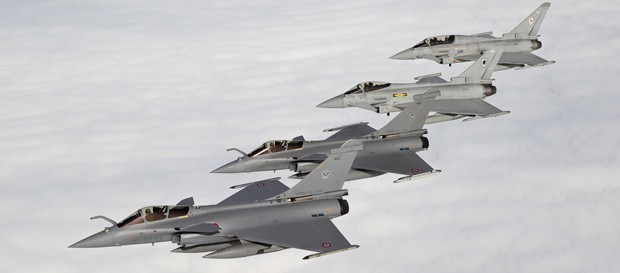After years of slow decline, European defence spending is showing signs of revival, according to data collected by the European Defence Agency (EDA) from its 27 Member States. The data show that total defence expenditure increased in 2014 after six years of continuous decline, and a further increase is expected in 2015.
The EDA calls 2014 a turning point, as aggregate defence expenditure increased from €190bn to €195bn (+2.3%), compared to the previous year. This was sufficient to overcome inflation and achieve 0.6% or €1.1bn real-term growth. 2015 estimates suggest a further nominal increase of 2.6% or €5bn to €200bn , close to the $204bn peak registered in 2007.
In nominal terms, spending has increased by €7bn over the 10-year period since the EDA first began collecting defence spending data. In real terms, however, defence spending has shrunk by €22bn (–10.7%) over the period.
Defence expenditure as a proportion of GDP has been steadily decreasing since 2005, and in 2015, it is estimated to have dropped to the lowest recorded level of 1.40% — far removed from the nominal NATO target of 2%.
Operation and maintenance expenditure continues on an upward trajectory, increasing in real terms by €4.6bn (10.3%) from 2006 to 2014. By contrast, defence investment, comprising equipment procurement and R&D (including R&T), continues to decline. Equipment procurement dropped by €4.3bn (15.0%) in 2014, the largest real decrease since 2006.
R&D expenditure appears to be on an upward trend since 2012, at least in nominal terms. In 2013, it achieved a 1.5% increase, and in 2014, it jumped by another 16.0% to €8.8bn, the biggest nominal increase observed to date. From 2006 to 2014, however, R&D expenditure fell by almost €2bn (18.5%) in real terms. Meanwhile, defence R&T expenditure declined by nearly €1bn (32%) over the same period.

